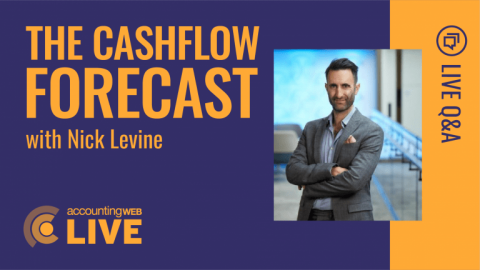How finance can chart the road to recovery
Over the past three months, finance teams have experienced first-hand the short-term complexities that come with the shift to remote working. The Covid-19 crisis prompted many of them to find new ways to integrate and stay connected with the wider business.
Remote working accelerated the conversion of paperwork into digital workflows, while virtual environments such as Microsoft Teams, Zoom and Google Meets took over from face-to-face gatherings.
Finance chiefs Gemma Craddock from Amido and Access Group CFO Rob Binns joined us to discuss what they have learned during the crisis in our latest webinar in association with Access Group. During the 60min session we explore how they coped with the challenges posed by Covid-19, and even more importantly, how they are embracing more flexible ways of working to steer their organisations towards recovery.
Crisis management
Gemma Craddock is finance director of Amido, a business technology consultancy that helps other organisations overhaul their processes with cloud-based software tools. As a user of the systems it supports, Amido had few issues moving to remote working, she said.
As part of the ISO 27001 certification process the company was going through, Amido carried out a business continuity test in early March to ensure everyone could work remotely. “That was well timed,” Craddock said. “All of our employees could work from home before Coronavirus, so the test was to make sure everyone had tools at the right time.”
Amido has a 31 March year end, so the lockdown came at an inconvenient time for other reasons. However, the company’s auditors were understanding and worked with Amido to reschedule the audit and do it over a longer period.
With the year-end sorted, the first thing Craddock then did was to reforecast and budget 2020-21 to reflect the impact of the crisis. This plan has now become a rolling quarterly forecast.
“We’ve got an Excel budget model that takes sales pipeline data from our Salesforce [CRM] system and combines it with accounts data from Access. The processes were already in place and because it’s semi-automated, the quarterly rolling budget is an acceleration of what we were already doing,” Craddock explained.
On top of that she used Microsoft Power BI to build a regular key performance indicator report pack for her board colleagues. These KPIs are now being used to track how the company is faring through the downturn and to communicate the situation to staff.
Divisional variances
At Access Group, Rob Binns has a similar KPI-based approach, but a broader divisional structure, ranging from health care and digital learning to hospitality and recruitment.
His reporting infrastructure, also constructed in Excel from different internal data sources, illustrated the impacts of the lockdown across the different divisions:
- Health and social care: “In the current situation it’s quite busy,” said Binns. “There’s a lot of demand for our customers, which translates into more activity for us.”
- Digital learning: A marked upturn in interest in Access digital learning solutions as customers look for new ways to train employees remotely.
- Recruitment and hospitality have seen less positive effects.
“As soon as lockdown happened, that had a dramatic impact on our customer base [in those divisions]. Volumes are down – there’s no surprise there,” Binns explained during the webinar.
To stay on top of the changes across the company’s customer base, Binns and his team did some rapid scenario planning and modelling in mid- to late March, when the crisis first broke. They created views of what the impact might look like with V-shaped and U-shaped profiles of how quickly the crisis set in and how quickly it might recover.
“We did that top-down at group level to get a view very quickly on what we thought the business would be. Since then, we built that up underneath on data points we’ve been seeing,” Binns said. The data used to adjust the scenarios are based on the existing KPIs for orders, sales pipelines, services and cash.
Plot a new course out of trouble
Both finance managers saw their role as supporting their companies with models setting out what the numbers would look like if the company moved in new directions to help identify the most viable options.
“Building towards the future is definitely based around automation and how you access information in the business,” Craddock said. “Finance results are in black and white. If you’ve got data to hand at all times and are able to present it, that’s a positive that can be taken out of this situation. Anyone can work remotely as long as you have the right tools.”
Rob Binns reinforced the positive role that good finance information can play in business recovery. “Inevitably your first thoughts are hunkering down and protecting the business. But we also have to balance that by turning our eyes to the future and realising that at some point things will get better. Business will be different, and what are we doing to support that?” he asked.
“As finance professionals, we’ve got to do all the things about conserving cash and understanding what’s happening in the business. But at end of the day we’re all here to help the business grow and have to make sure we are doing the right things to put the business in the best possible position to pull out of this and go on to be as successful as it possibly can be.”
To get the full story from Gemma Craddock and Rob Binns, watch The road to recovery: How finance can meet evolving challenges on demand.













